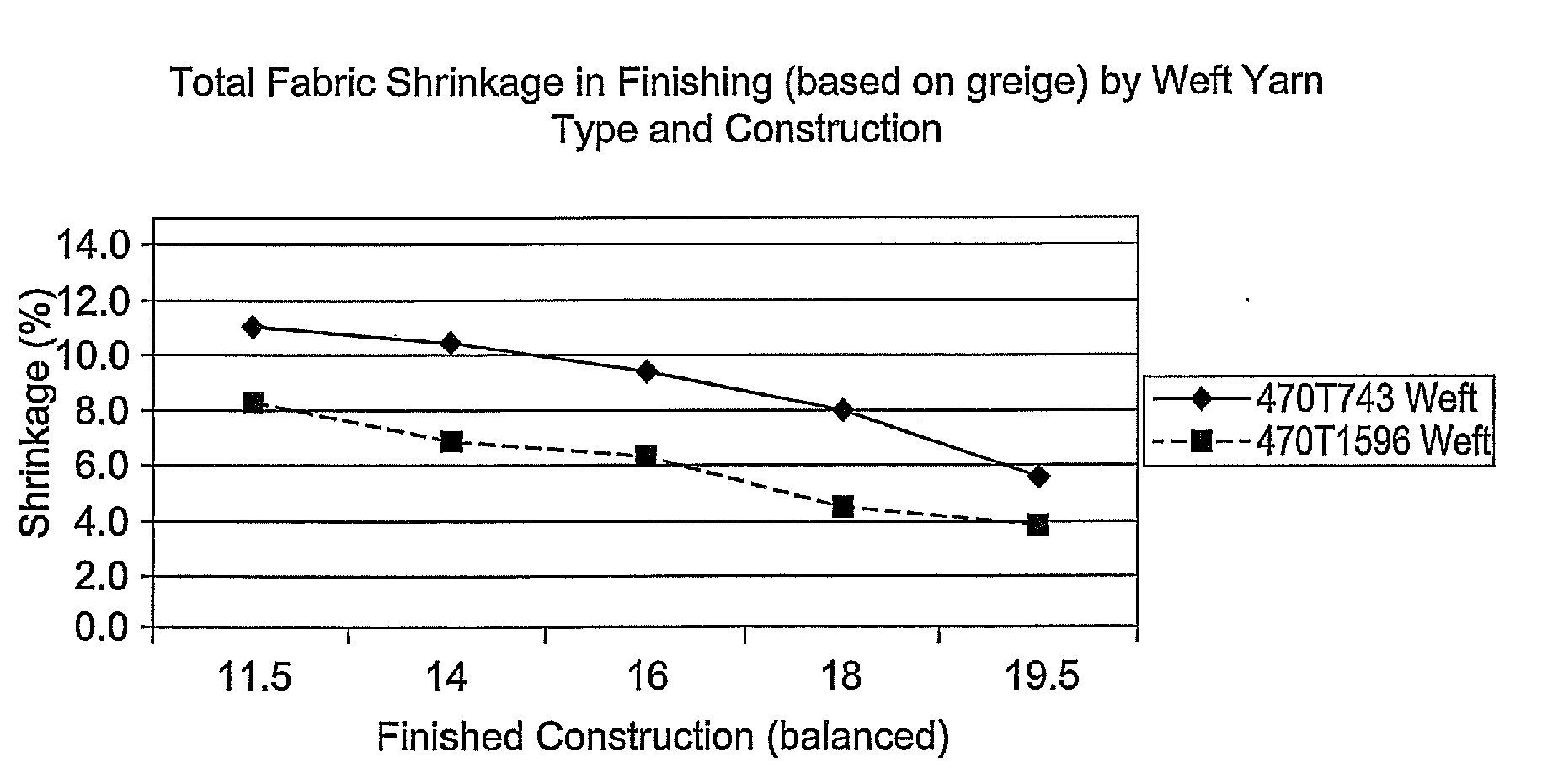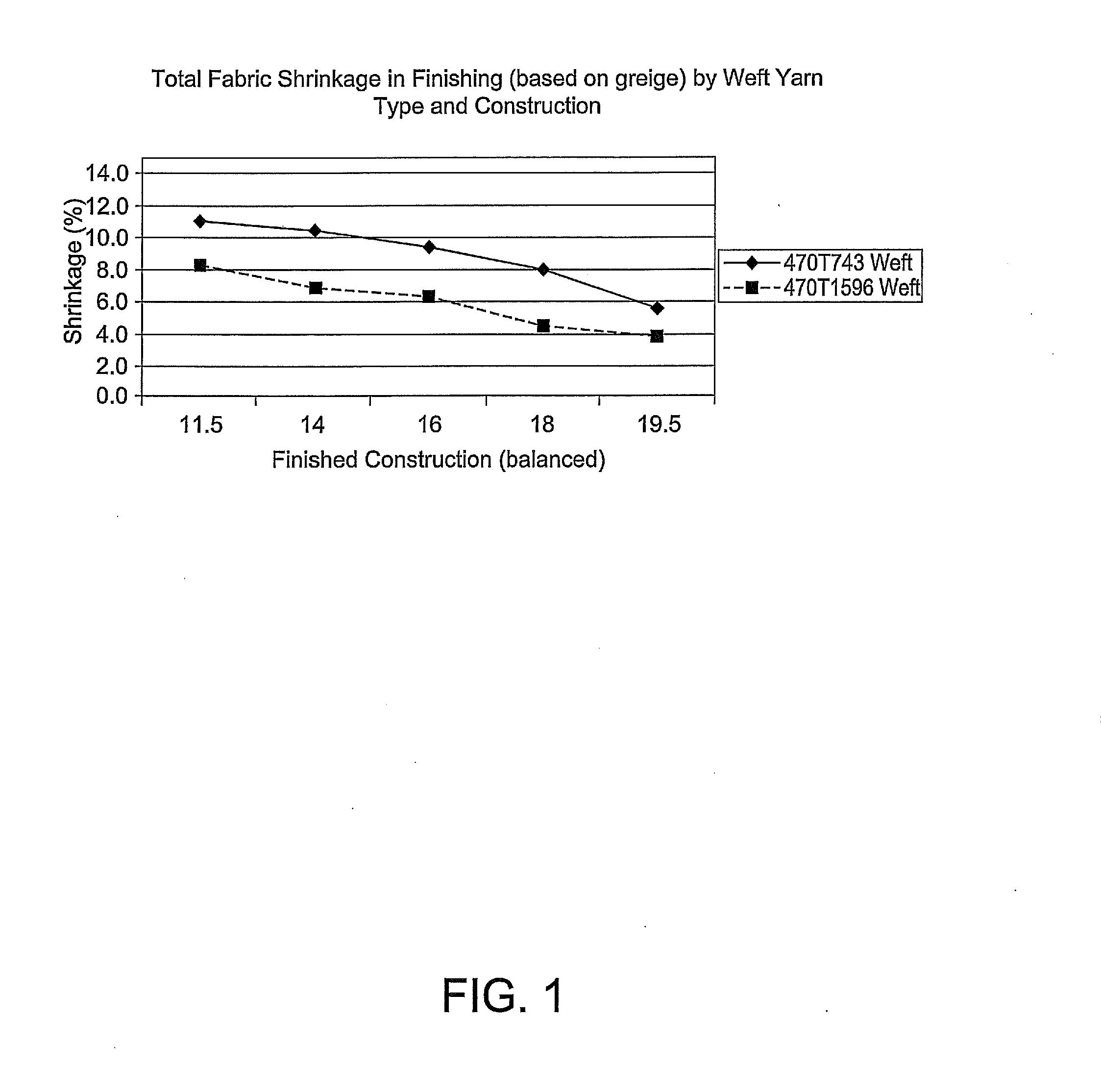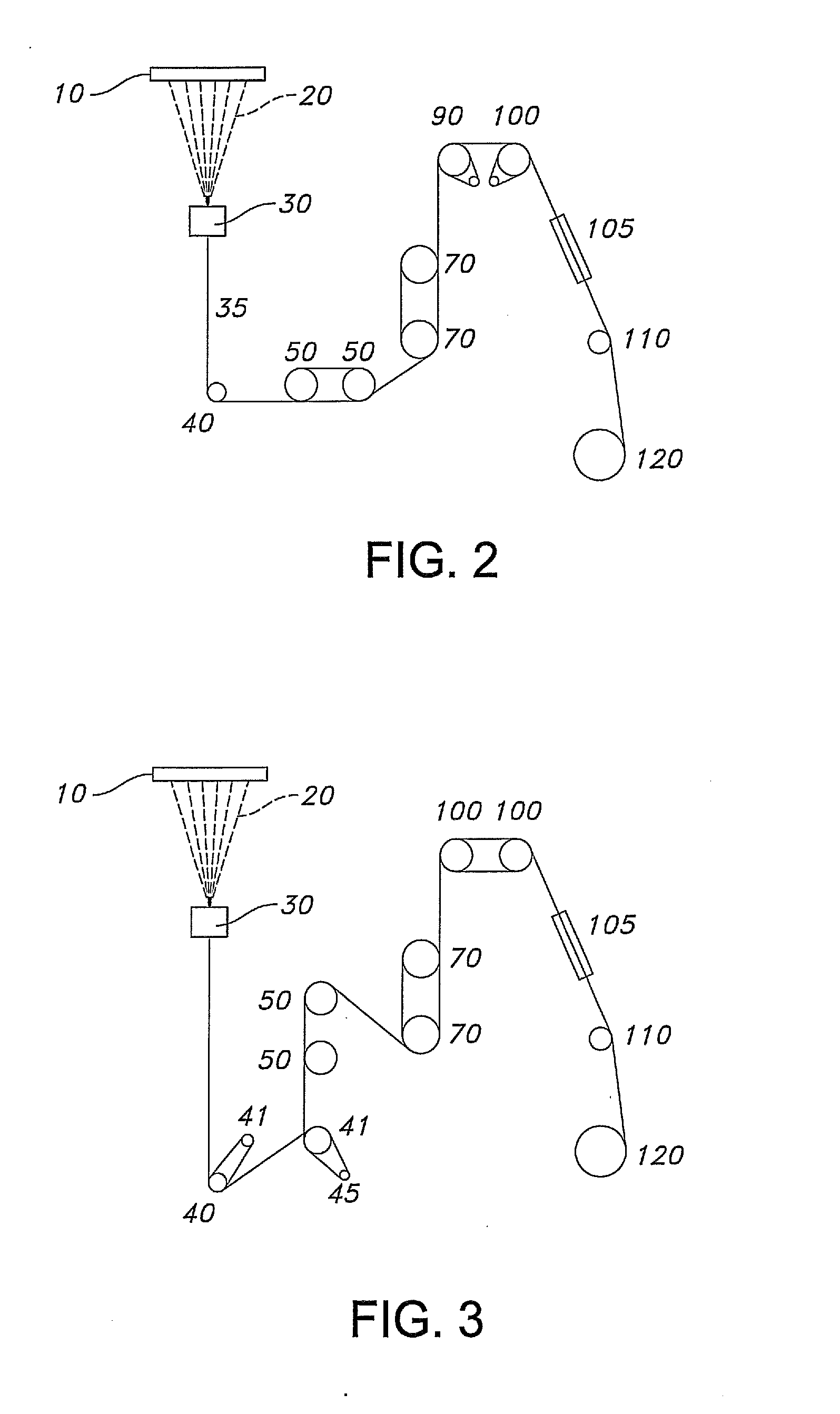High tenacity low shrinkage polyamide yarns
a polyamide and high tenacity technology, applied in the field of high tenacity and low shrinkage polyamide, can solve the problems of subsequent processing problems, unsuitable two-stage process for high production rate manufacturing of very high, and natural tendency of yarn to contra
- Summary
- Abstract
- Description
- Claims
- Application Information
AI Technical Summary
Benefits of technology
Problems solved by technology
Method used
Image
Examples
example 1
[0081]Sample 1 which exemplifies this invention was made using the spin-draw process with an additional tension relaxation and control step as shown in FIG. 2. The remainder of examples are comparative samples, each identified by a number with a letter prefix, and each is illustrated by FIG. 3. (In FIG. 3, the multifilament yarn 35 is fed to the drawing rolls by a pair of feed rolls, 40 and 45, each with associated separator rolls, 41 and 46.) The comparative samples were each spun and drawn as was Sample 1, except that a tension relaxation step, as illustrated in FIG. 3, was conducted with a coupled pair of relaxation and tension let-down rolls 100, each rotating at the same speed, but lower than that of draw rolls 70. The amount of tension let-down and, therefore, the minimum attainable shrinkage, was determined by observing the minimum tension in this tension relaxation zone that was capable of sustaining a stable threadline.
TABLE 1Shrink-Sam-FilamentBreakingTenacityElongationage...
example 2
[0083]In this example, summarized in Table 2, woven fabrics are constructed on a water-jet loom using yarns of the present invention or comparative yarns. In all cases the yarns are 470 decitex with a 140 filament count. The yarns of the invention are labelled numerically, and the comparative samples are identified by a number with a letter prefix. The yarns of the present invention are manufactured by the same process as described for the yarn exemplifying the present invention in Example 1. The comparative yarns are manufactured by the same process as described for the comparative yarns in Example 1 with the extent of yarn draw and relaxation varied so as to yield yarns with the varying values of tenacity and shrinkage. All results are obtained on uncoated fabrics.
[0084]It is apparent that use of the yarn of the present invention permits relatively low permeability fabrics to be produced with reduced fabric shrinkage compared to previously available high tenacity yarn of comparabl...
example 3
[0085]In this example, summarized in Table 3, woven fabrics are constructed on a One-Piece-Woven (OPW) air-jet loom. The fabrics of the invention are labelled numerically and the comparative fabrics are identified by a number with a letter prefix. The yarns of the present invention and the comparative yarns used to manufacture the fabrics described in Table 3 are manufactured by the same processes as were described in Example 2.
[0086]It is apparent that the yarns of this invention may be used to produce very high tenacity airbag cushions (four per loom width) with greater width and comparable strength to fabrics made from previously available high tenacity yarns. Consequently, fabric manufacturing efficiency is maximized.
TABLE 3Cushion WidthFabric BreakSampleTenacityYarn Shrinkage %(cm)Strength (N)184467.733572843.567.83315H-3836.666.53200K-5722.268.32890
PUM
| Property | Measurement | Unit |
|---|---|---|
| Temperature | aaaaa | aaaaa |
| Temperature | aaaaa | aaaaa |
| Fraction | aaaaa | aaaaa |
Abstract
Description
Claims
Application Information
 Login to View More
Login to View More - R&D
- Intellectual Property
- Life Sciences
- Materials
- Tech Scout
- Unparalleled Data Quality
- Higher Quality Content
- 60% Fewer Hallucinations
Browse by: Latest US Patents, China's latest patents, Technical Efficacy Thesaurus, Application Domain, Technology Topic, Popular Technical Reports.
© 2025 PatSnap. All rights reserved.Legal|Privacy policy|Modern Slavery Act Transparency Statement|Sitemap|About US| Contact US: help@patsnap.com



